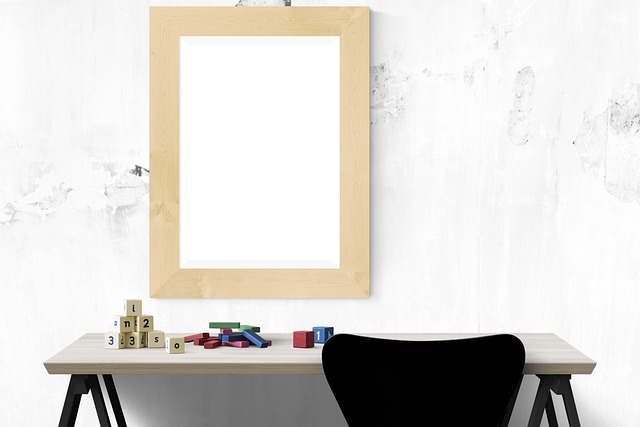Repainting your interior walls is more than just a cosmetic update—it’s a vital part of home maintenance that preserves your space’s appeal and structural integrity. The frequency of repainting depends on numerous factors like sprayer type, from room usage to environmental conditions.
This guide delves into the nuances of repainting timelines, offers actionable tips for prolonging paint life, and highlights signs that it’s time for a refresh. By understanding these elements, you can create a tailored maintenance plan that keeps your home vibrant for years.
Repainting Your Interior Walls: Maintaining a Fresh and Inviting Home
Factors Influencing Repainting Frequency

- Room Usage and Activity Levels
High-traffic areas like hallways, entryways, and living rooms endure constant wear from daily activities, furniture movement, and accidental bumps. For example, children’s playrooms or pet-friendly spaces may show scuffs and fingerprints sooner than formal dining rooms. Conversely, guest bedrooms or infrequently used offices experience minimal wear, extending the paint’s lifespan. - Paint Quality and Finish
Not all paints are created equal. High-quality paints with higher levels of acrylic resins offer better durability and washability. The finish also plays a role:- Matte/Flat: Hides imperfections but is less stain-resistant.
- Eggshell/Satin: Offers a balance of durability and aesthetics, ideal for living rooms.
- Semi-Gloss/Gloss: Highly washable and moisture-resistant, perfect for kitchens and bathrooms.
Low-VOC (volatile organic compound) paints are eco-friendly but may require more frequent touch-ups in high-use areas.
- Environmental Conditions
Humidity, temperature fluctuations, and airborne pollutants significantly impact paint longevity. Bathrooms and kitchens face steam and grease buildup, which can cause peeling or mold growth. Homes in coastal regions may experience salt air corrosion, while arid climates can lead to cracking. - Sunlight Exposure
UV rays fade pigments over time, particularly in south-facing rooms or spaces with large windows. Darker colors fade faster than lighter hues, and direct sunlight can weaken paint adhesion.
Room-by-Room Repainting Timelines
- Living Rooms and Dining Rooms (5–7 Years)
These moderately used spaces benefit from durable eggshell or satin finishes. To extend the timeline, rotate furniture to minimize wall wear and address scuffs with touch-up paint. - Kitchens (3–4 Years)
Grease, steam, and frequent cleaning take a toll. Focus on areas near stoves and sinks, opting for semi-gloss finishes. Use mold-resistant primers and degrease walls annually with a mild detergent. - Bathrooms (3–4 Years)
Humidity and condensation require moisture-resistant paints. Install exhaust fans to reduce steam buildup, and inspect corners for mold. Semi-gloss finishes are easier to wipe down. - Hallways and Entryways (2–3 Years)
These high-traffic zones accumulate scuffs and dirt. Consider durable finishes like satin or semi-gloss. Install chair rails or wainscoting to protect lower walls. - Bedrooms (5–7 Years for Adults; 3–4 Years for Kids)
Adult bedrooms see minimal wear, but children’s rooms may need freshening due to artwork, stickers, or play-related marks. Use washable paints for easy cleanup. - Home Offices (5–7 Years)
With low activity, offices can go longer between repaints. Refresh the color to boost productivity—soft blues or greens promote focus.
Pro Tips to Extend Paint Life
- Invest in Quality Supplies
Premium paints and primers create a robust base. For example, stain-blocking primers prevent watermarks or crayon stains from bleeding through. - Clean Walls Strategically
- Dust walls monthly with a microfiber cloth.
- Spot-clean stains using a sponge and mild soap. Avoid abrasive scrubbers on flat finishes.
- For kitchens, use a degreaser solution; in bathrooms, a vinegar-water mix combats mildew.
- Prevent and Repair Damage
- Fill nail holes with spackle and sand smooth.
- Apply touch-up paint to small chips using a fine brush.
- Use paintable caulk to seal gaps around trim and windows.
- Control Indoor Climate
- Maintain 40–60% humidity with dehumidifiers or humidifiers.
- Ensure proper ventilation in wet areas to prevent peeling.
- Protect from UV Damage
Install UV-blocking window films or thermal curtains. Position furniture or plants to shade vulnerable walls.
Signs It’s Time to Repaint
- Fading: Noticeable color loss, especially near windows.
- Peeling/Cracking: Indicates moisture intrusion or poor adhesion.
- Stubborn Stains: Grease, crayon, or watermarks that resist cleaning.
- Outdated Style: Shift trends or a desire for a new aesthetic.
Preparation: The Key to Long-Lasting Results
- Clean Walls Thoroughly: Remove dust, grease, and mildew with TSP (trisodium phosphate).
- Sand and Prime: Smooth rough patches and apply primer to ensure even adhesion.
- Use Proper Tools: High-quality brushes and rollers reduce streaks.
Eco-Friendly and Cost Considerations
- Low-VOC Paints: Improve indoor air quality and are safer for households with allergies.
- Cost vs. Longevity: Spending more upfront on premium paint can save money over time.
- Disposal: Recycle old paint through community programs instead of landfill dumping.
When to Hire a Professional
While DIY is cost-effective, complex projects (e.g., vaulted ceilings, intricate trim) may require experts. Professionals also address underlying issues like mold or water damage.
FAQs
Q: Can I paint over mold?
A: No. Remove mold with a bleach solution, dry the area, and apply mold-resistant primer first.
Q: How long should I wait before repainting a newly painted wall?
A: Wait at least 2–3 weeks for the paint to fully cure before adding another coat.
Q: Does dark paint require more maintenance?
A: Dark colors show flaws and fading more easily, so touch-ups may be needed sooner.
Conclusion
Regular repainting preserves your home’s beauty and value while allowing creative expression.
By selecting the right materials, addressing wear promptly, and adapting to your home’s unique needs, you can minimize maintenance and maximize enjoyment. Whether refreshing a single room or overhauling your entire interior, a strategic approach ensures lasting, stunning results.
Proactive Care Checklist:
- Inspect walls biannually for damage.
- Clean high-traffic areas quarterly.
- Update paint every 5–7 years (adjust based on room usage).
By embracing these practices, your walls will remain a testament to both style and resilience.

Be the first to comment on "How Often Should You Repaint Interior Walls"